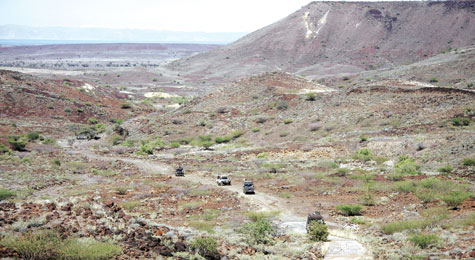×
The Standard e-Paper
Home To Bold Columnists
 |
| Trip through some torturous terrain for both man and machine. (Photo:Martin Mukangu/Standard) |
The rugged 800 kilometre expedition from Sibiloi, through the famous Chalbi desert, to Marsabit is a real adventure through some of Africa’s most challenging roads, writes ALLAN OLINGO
It was time to head back to Nairobi, after my journey to the cradle of mankind-Koobi Fora. The previous night, Rufus and Kyalo, our lead drivers from Game Trackers had warned us that we should brace for the toughest and most challenging journey back to Nairobi.